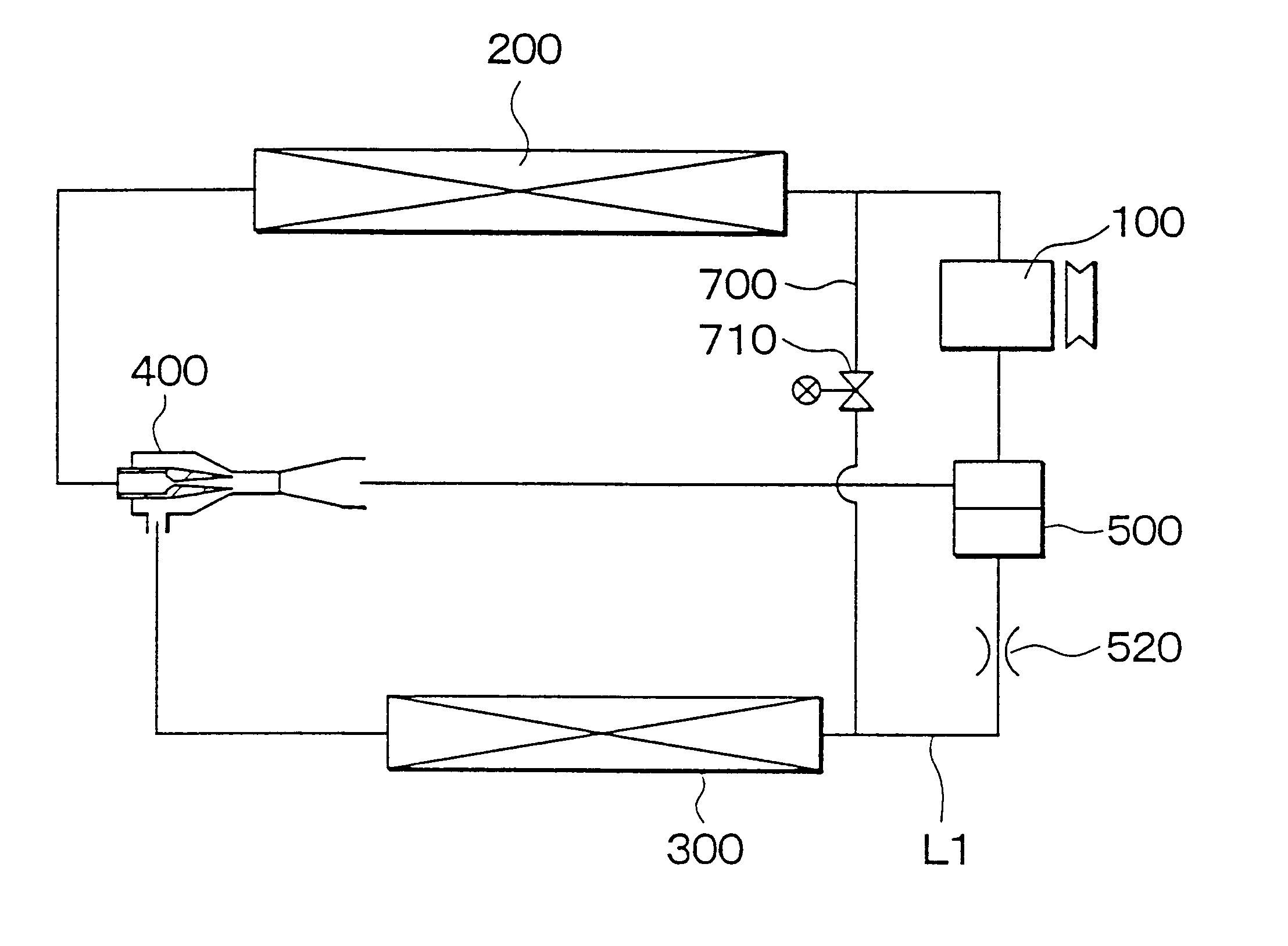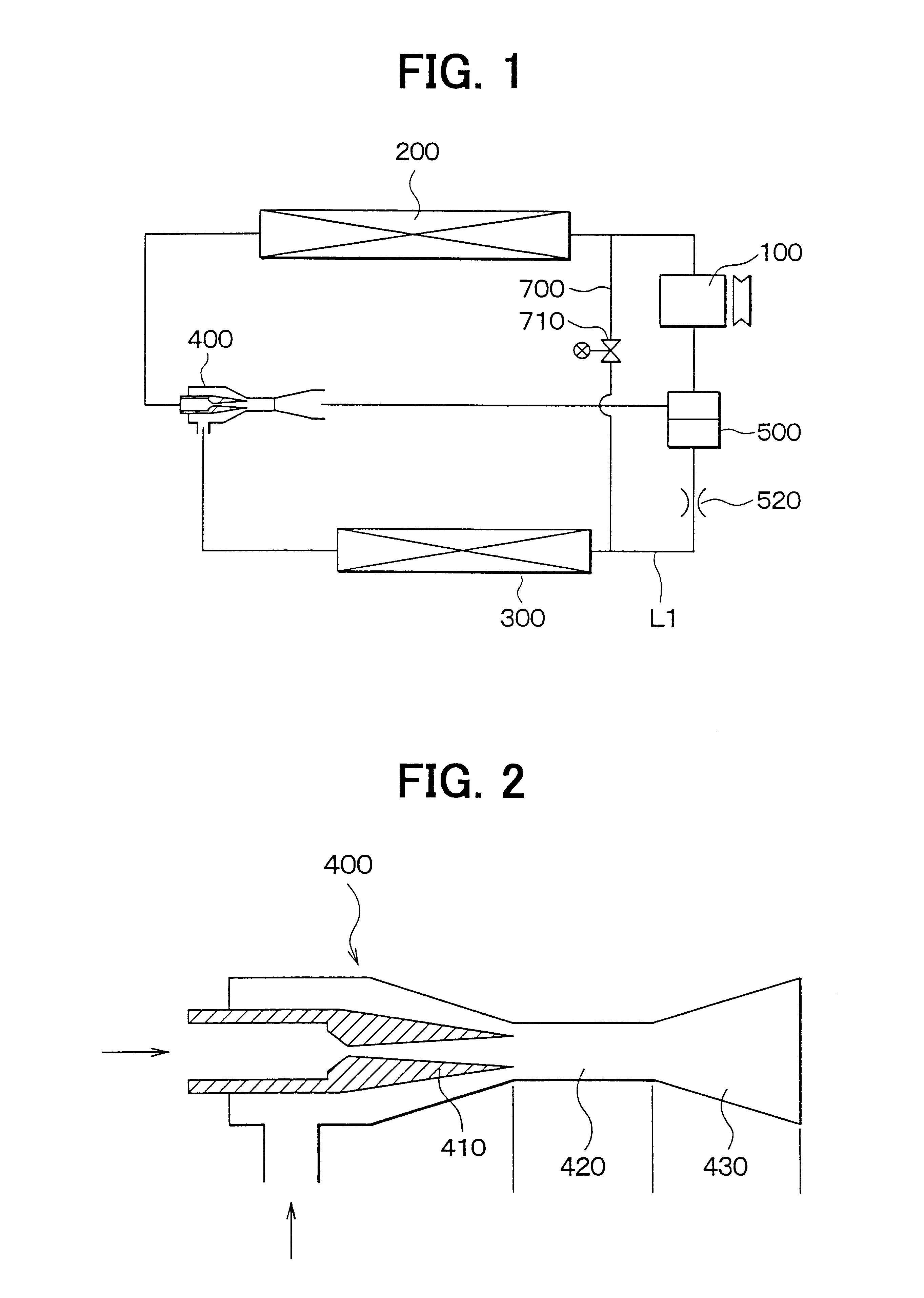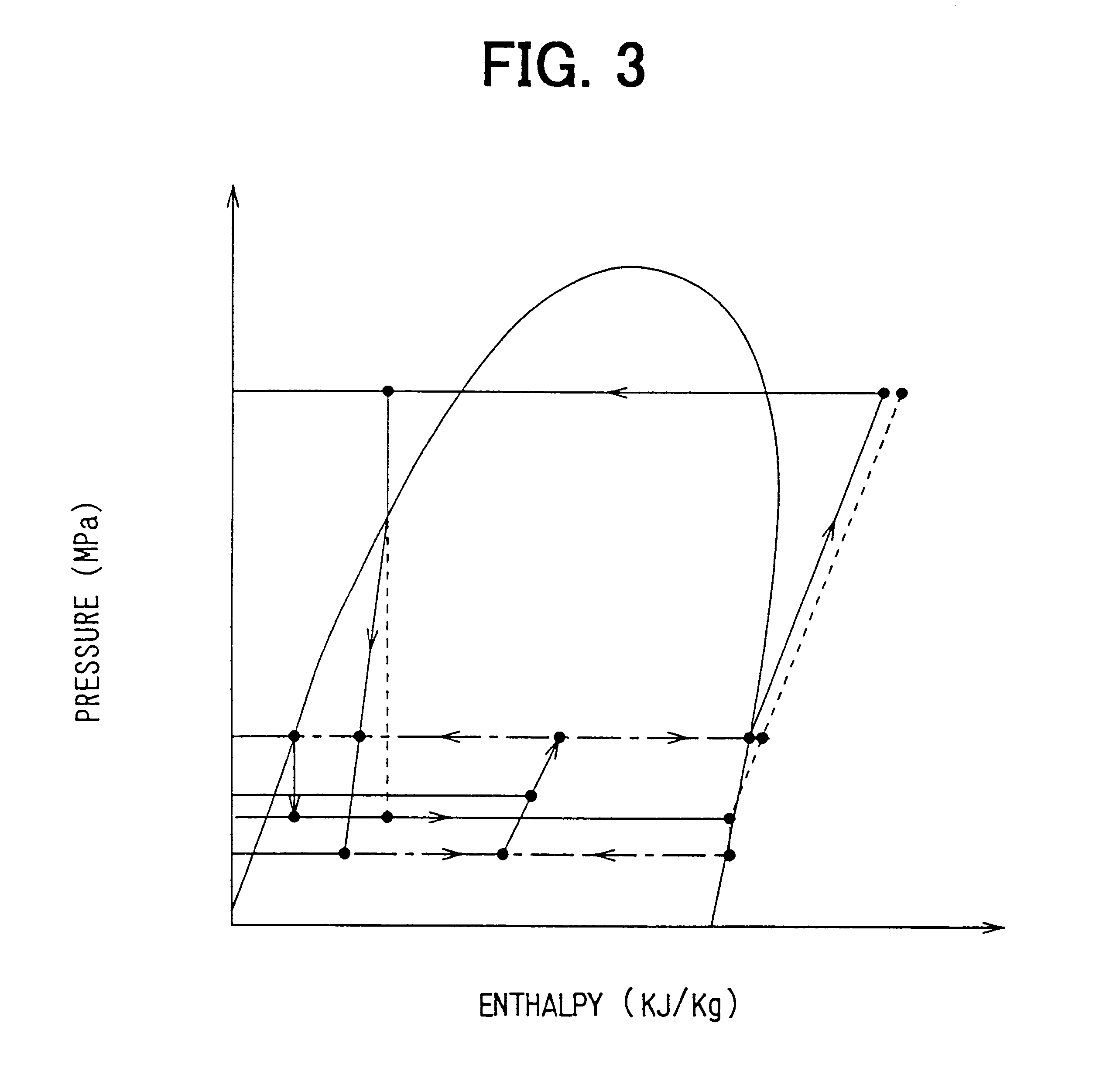Ejector cycle system
a technology of ejector cycle and evaporator, which is applied in the direction of gas cycle refrigeration machines, refrigeration machines, corrosion prevention, etc., can solve the problem of inability to perform defrosting operation of evaporators
- Summary
- Abstract
- Description
- Claims
- Application Information
AI Technical Summary
Benefits of technology
Problems solved by technology
Method used
Image
Examples
first embodiment
A first preferred embodiment of the present invention will be now described with reference to FIGS. 1-3. In the first embodiment, an ejector cycle system of the present invention is typically used for a vehicle air conditioner.
In the first embodiment, a compressor 100 is driven by a driving source such as a vehicle engine (not shown) to suck and compress refrigerant (e.g., carbon dioxide in the first embodiment). In a radiator 200 (i.e., high-pressure side heat exchanger), refrigerant discharged from the compressor 100 is heat-exchanged with air (outside air) outside a passenger compartment. In an evaporator 300 (i.e., low-pressure side heat exchanger), liquid refrigerant in the ejector cycle system is heat-exchanged with air to be blown into a passenger compartment to cool air. An ejector 400 decompresses and expands high-pressure refrigerant flowing from the radiator 200 to suck therein gas refrigerant evaporated in the evaporator 300, and converts an expansion energy to a pressur...
second embodiment
the present invention will be now described with reference to FIG. 4. In the second embodiment, instead of the fixed throttle 520, a check valve 510 is provided in the refrigerant passage L1. The check valve 510 is disposed to allow a direct refrigerant flow from the gas-liquid separator 500 to the evaporator 300, and to prohibit a direct refrigerant flow from the evaporator 300 to the gas-liquid separator 500. Accordingly, in the defrosting operation of the evaporator 300, hot gas refrigerant discharged from the compressor 100 can be accurately introduced into the evaporator 300.
Further, in the second embodiment, the refrigerant passage L1 is set to generate a predetermined pressure loss while refrigerant flow, in order to reduce the pressure of refrigerant sucked into the evaporator 300 and to accurately reduce the pressure (evaporation pressure) in the evaporator 300. For example, the refrigerant passage L1 can formed by a capillary tube or can be provided with a fixed throttle. ...
third embodiment
the present invention will be now described. In the third embodiment, a three-way valve 710a is further provided in a joint portion where the hot gas passage 700 and the refrigerant passage L1 are joined. Accordingly, in the defrosting operation of the evaporator 300, high-temperature refrigerant discharged from the compressor 100 can be accurately introduced into the evaporator 300 through the three-way valve 710a. In the third embodiment, a decompression unit for decompressing refrigerant can be provided in the three-way valve 710a.
A fourth preferred embodiment of the present invention will be now described with reference to FIG. 6. In the fourth embodiment, instead of the fixed throttle 520 described in the first embodiment, a valve 530 that is controlled to change its opening degree is provided in the refrigerant passage L1. Specifically, the opening degree of the valve 530 can be controlled from zero to a predetermined opening degree by which a predetermined pressure loss is ge...
PUM
 Login to View More
Login to View More Abstract
Description
Claims
Application Information
 Login to View More
Login to View More - R&D
- Intellectual Property
- Life Sciences
- Materials
- Tech Scout
- Unparalleled Data Quality
- Higher Quality Content
- 60% Fewer Hallucinations
Browse by: Latest US Patents, China's latest patents, Technical Efficacy Thesaurus, Application Domain, Technology Topic, Popular Technical Reports.
© 2025 PatSnap. All rights reserved.Legal|Privacy policy|Modern Slavery Act Transparency Statement|Sitemap|About US| Contact US: help@patsnap.com



